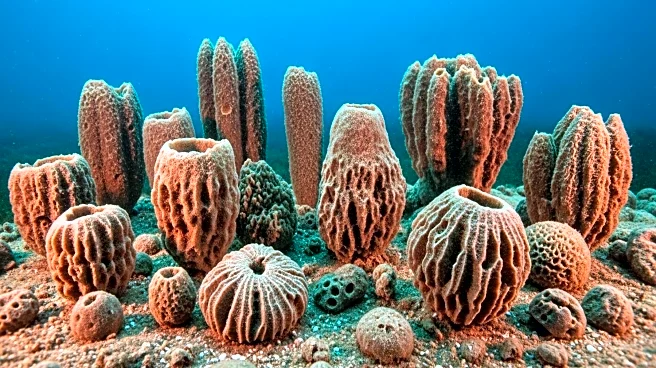What is the story about?
What's Happening?
Researchers from the Massachusetts Institute of Technology (MIT) have identified chemical fossils in ancient rocks that suggest sea sponges may have been among the first animals on Earth. These chemical fossils, known as steranes, are stable forms of sterols found in the cell membranes of complex organisms. The study, led by MIT paleobiologist Roger Summons, discovered these steranes in rocks dating back over 541 million years to the Ediacaran Period. The findings build on previous research from 2009, which linked 30-carbon steranes to ancient sponges. The new study identified a rarer 31-carbon sterol, further supporting the connection between these ancient steranes and modern demosponges. The research team confirmed the source by analyzing living demosponges, which still produce the C31 sterols, providing strong evidence of their ancient origins.
Why It's Important?
This discovery is significant as it provides insight into the early evolution of life on Earth, particularly the emergence of complex organisms. Understanding the origins of sea sponges can help scientists piece together the evolutionary history of multicellular life. The study also highlights the importance of chemical fossils in tracing biological history, offering a method to authenticate biomarkers and verify their biological origins. This research could influence future studies in paleobiology and evolutionary biology, potentially leading to new discoveries about the early life forms that shaped the planet's biological landscape.
AI Generated Content
Do you find this article useful?















